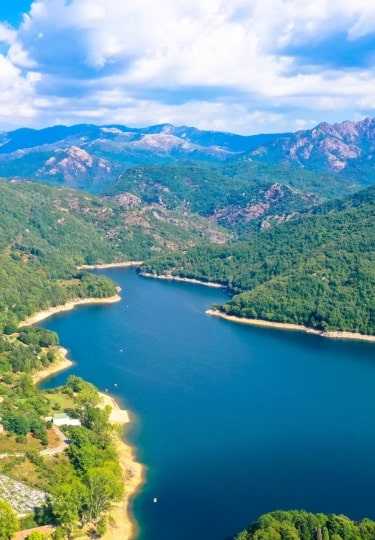A world of craggy mountains and ruby-red cliffs, its coast dotted with ancient fortified towns, Corsica is packed with personality and history. It’s also the birthplace of the French emperor Napoléon Bonaparte, a fact of which Corsicans are proud.
Corsica has its own traditions, cuisine, wine, and style. From its legacy in French military history to its heyday as a seaside retreat for Europe’s elite, the island has extraordinary charm.
Here are 12 things to do in Corsica.
Stroll Around Elegant Ajaccio
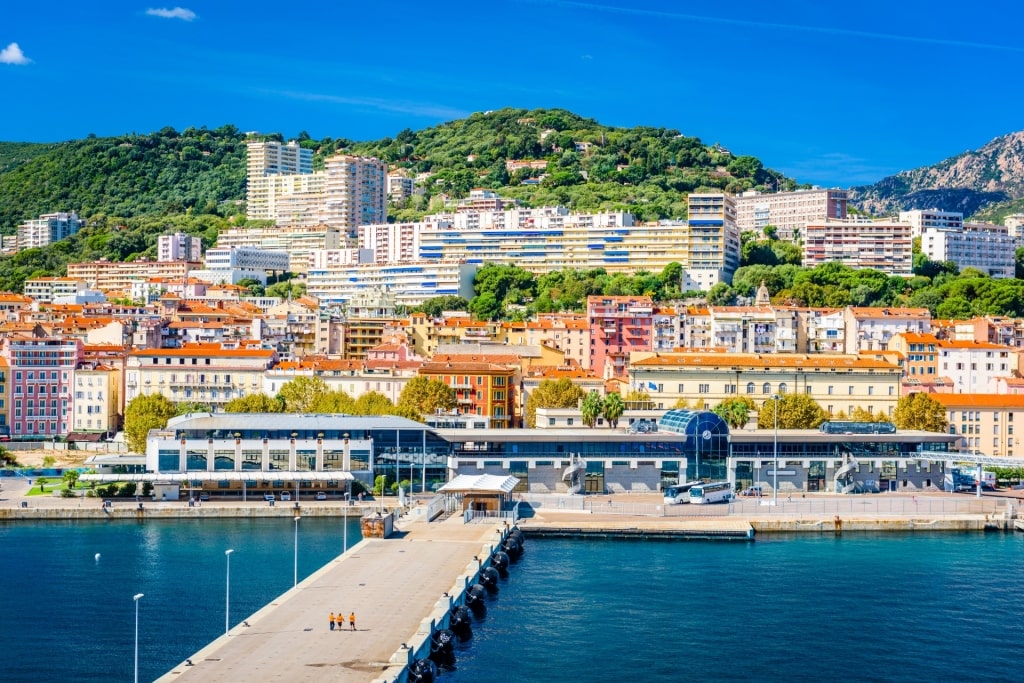
Ajaccio
Corsica’s handsome capital basks in a curve around the sparkling Golfe d’Ajaccio, itself framed by high mountains, their peaks draped in snow in early spring.
Ajaccio echoes the buzzing, fashionable vibe of the Côte d’Azur, on the French mainland, but is altogether more laid back. This compact city also clings to the legacy of its most famous son, the French emperor Napoléon, whose birthplace is a big attraction.
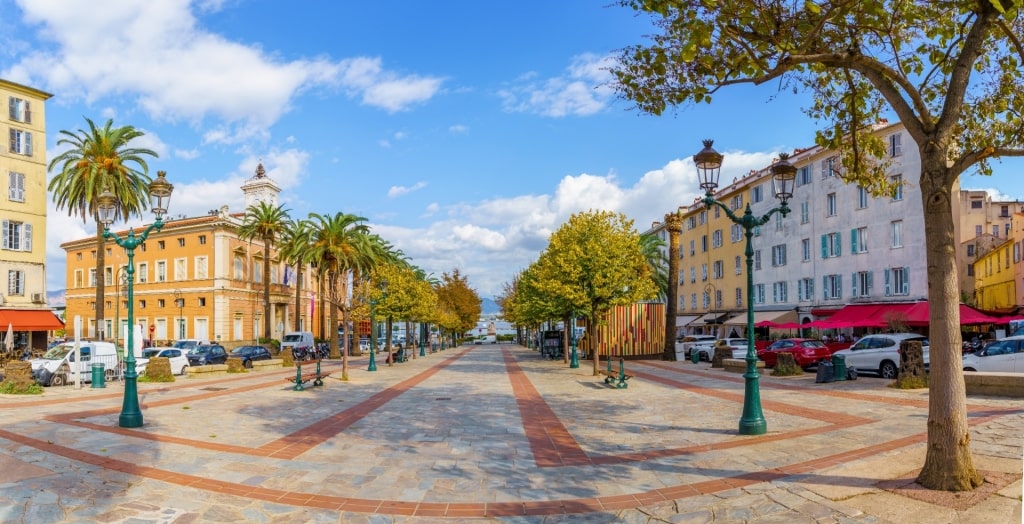
Place Foch, Ajaccio
Wandering the old center is the best way to soak up the atmosphere of this enchanting city. Tall, terracotta-pink houses line the waterfront, adorned with shutters in deep green.
Just inland, radiating out from Place Foch, a square framed by tall palm trees, you’ll find elegant boulevards, sunlit squares with splashing fountains, and a seemingly endless array of alluring brasseries.
There are numerous highlights to see on your stroll. The elegant, yellow-and-white neoclassical Église Saint-Roch, built in 1885, lies on the Cours Napoléon, the main thoroughfare of the city.

Napoléon statue, Ajaccio
You’ll find a statue of Napoléon in uniform, erected in 1938, on the Place d’Austerlitz, celebrating the victories of the emperor. In fact, there’s Napoléon history wherever you turn; peek into the 16th century Ajaccio Cathedral Santa Maria Assunta and you’ll see the font where he was baptized.
A chunky, 16th-century citadel dominates the headland to the north. The sweep of St. François Beach, which lines much of the urban area, is never far from view should you need to take a break and soak in the sea views.
After your walk, pick an outside table at one of the many seafood brasseries and watch the world go by over a lunch of fresh fish.
Learn About Napoléon’s Legacy
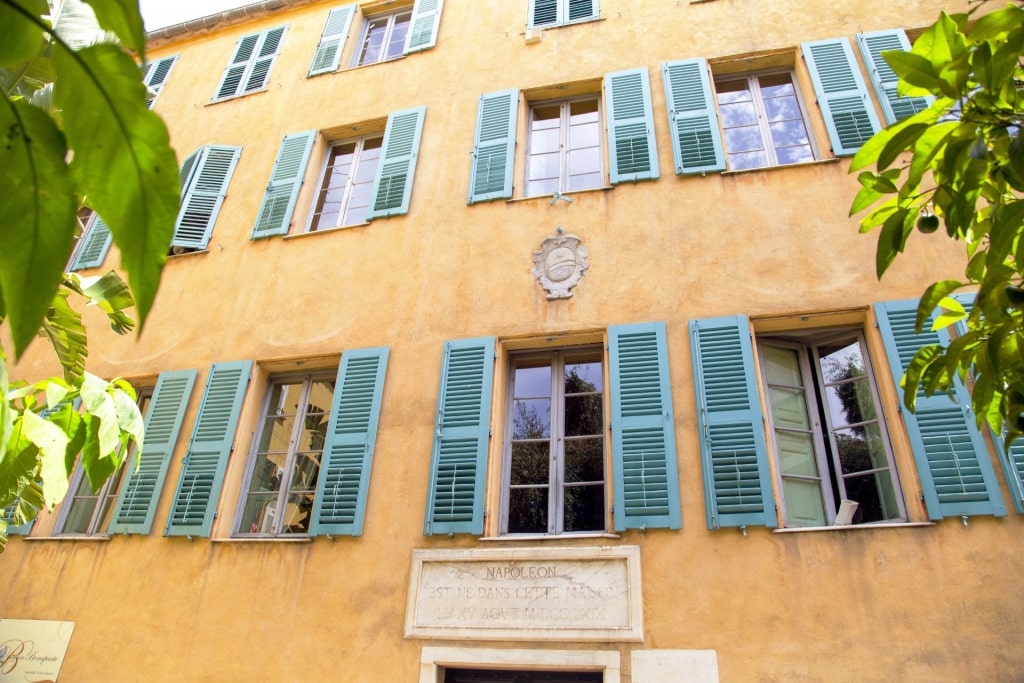
Maison Bonaparte
The legacy of Napoléon Bonaparte is hugely important to Corsicans, who regard the former French emperor as their most famous son.
Rightly so; Napoléon is known as one of the greatest generals in European history and played a significant role in the French Revolution. He also reformed France’s legal, banking, and education systems.
Napoléon was born in 1769 in what’s now known as the Maison Bonaparte, on the rue St-Charles. He spent his early childhood in Ajaccio with his seven siblings, and the house remained in the family until the 1920s.
While the house doesn’t provide huge detail about Napoléon’s life, it does offer an intriguing glimpse into the life of a wealthy land-owning family on the island in the 18th century. There are a few pieces of original furniture and family portraits, too.
Explore Craggy Mountain Scenery
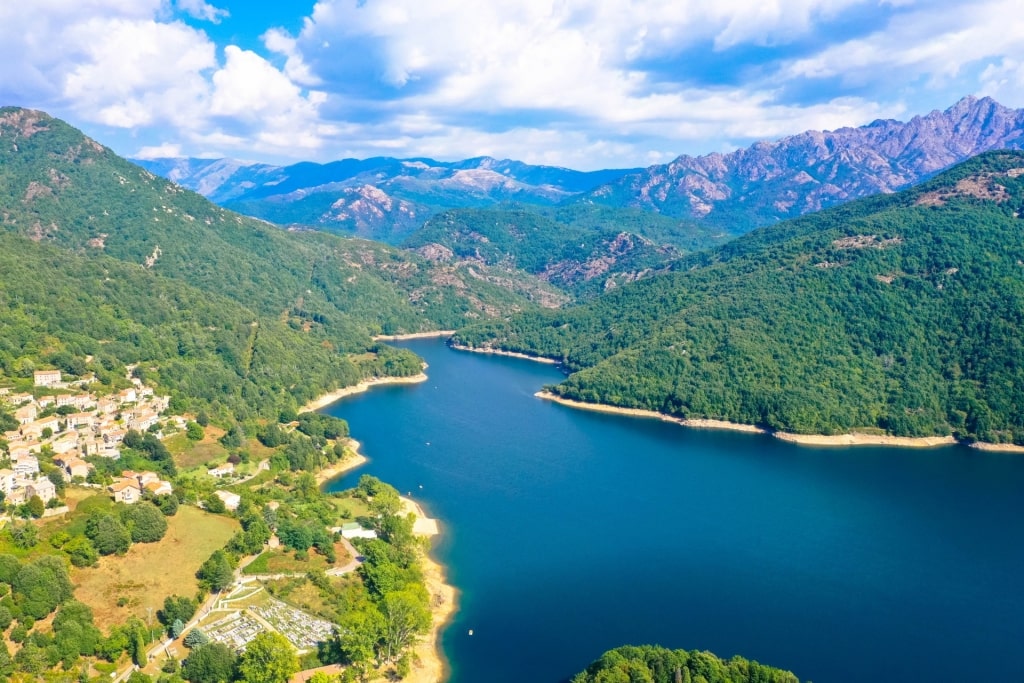
Prunelli Gorges
Corsica’s interior is rugged and mountainous, and in places, seemingly impenetrable. Sparkling lakes, deep gorges, and red granite cliffs are all characteristic of the Mediterranean island and are within easy reach of the coast.
One of the best things to do in Corsica is to get out into the wild interior. An easy day trip from Ajaccio takes you to the Prunelli Gorges. These scenic, forested ravines are located at one end of Lac de Tolla, a reservoir that’s used as an outdoor recreation area, with kayaks for rent and hiking trails.
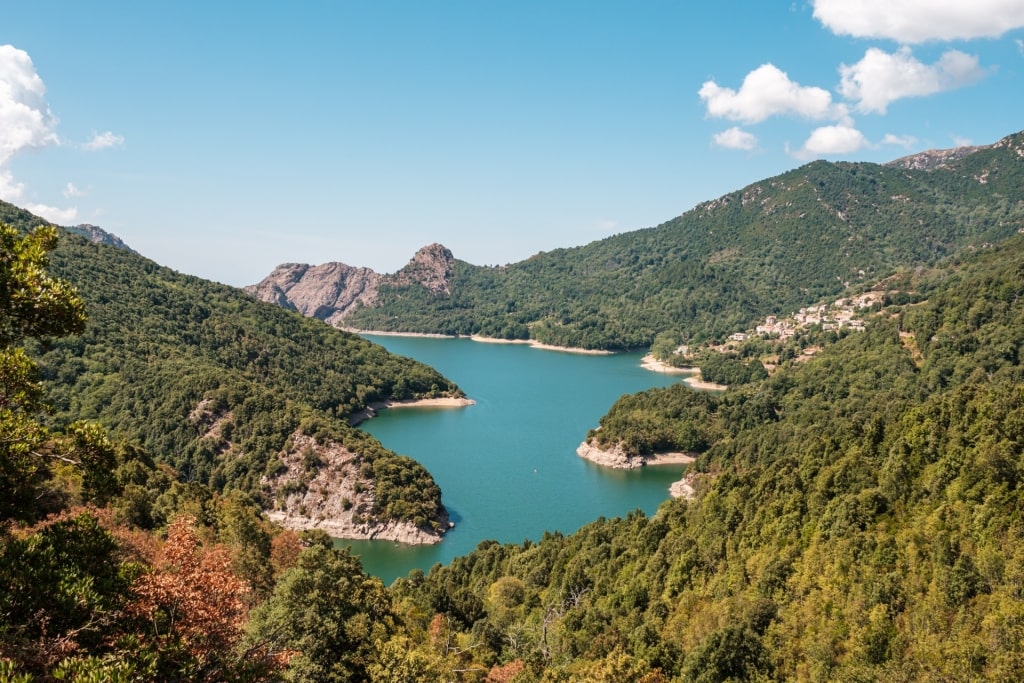
Prunelli Gorges
Your route takes you along a twisting mountain road through a pristine forest of chestnut, walnut, holm oak, and pine, with stops to admire the dramatic scenery that makes this one of the best hikes in Europe.
Spend some time in the pretty mountain village of Bastelica, surrounded by orchards and known for its air-dried ham and mountain honey, and inhale the fresh mountain air.
Read: Unique Places to Visit in Europe
See Red Rock & Sea Birds on the Iles Sanguinaires
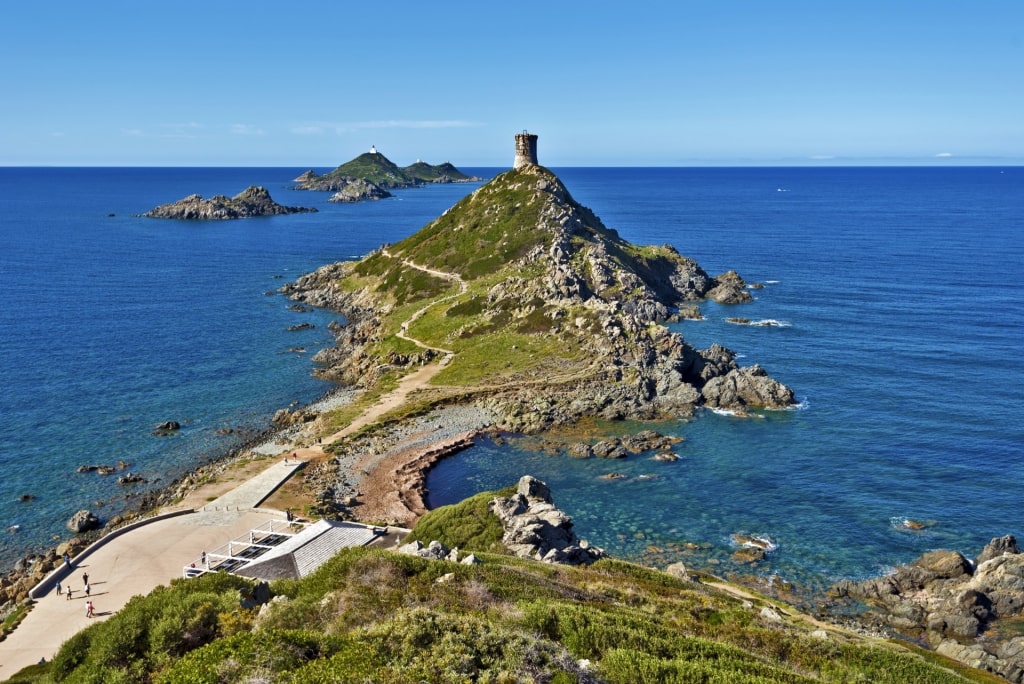
Iles Sanguinaires
The four jagged Iles Sanguinaires, which means “blood islands” due to the blood-red color of the rock they’re composed of, are scattered off the Parata peninsula to the north of Ajaccio.
The islands are heavily protected because of the many species of birds that nest here, including the yellow-legged gull, black-headed gull, Adouin’s gull, and ashen shearwater.
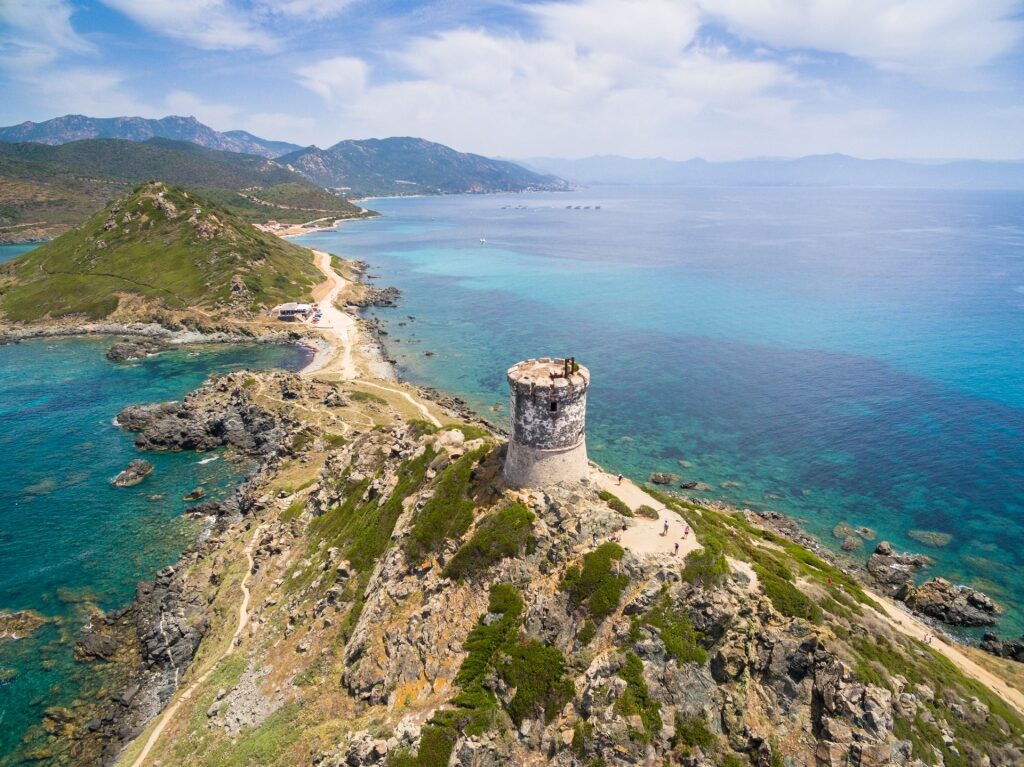
Iles Sanguinaires
Nobody lives here today, although an ancient Genoese watchtower keeps guard, as does a more modern lighthouse.
Human presence has been detected on the islands since the 16th century. The watchtower was constructed as a beacon to warn coral fishermen returning on the long journey from Africa.
Visit the islands on a boat trip from Ajaccio or admire them from further afield from one of the hiking trails that snake around the peninsula.
Sunbathe & Swim at St. Francois Beach
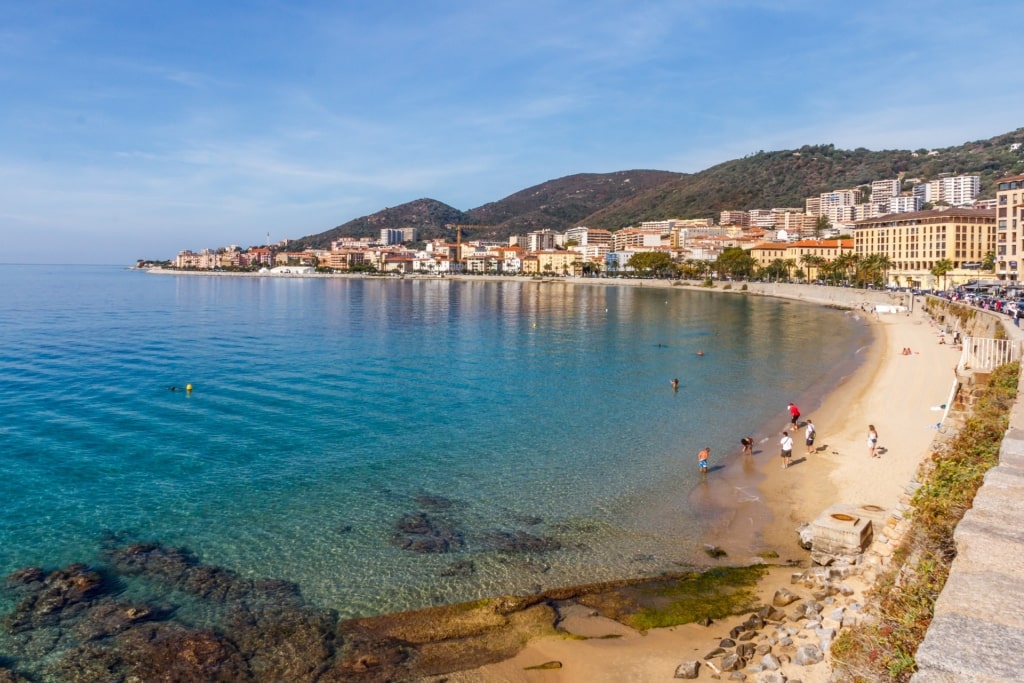
St. Francois Beach
Ajaccio is one of those French beach towns blessed with a gorgeous beach right at its center.
The long St. François stretches from the city bastions and the chunky citadel, its promenade lined with tall palms, cafés, and restaurants serving authentic Corsican food.
The beach is narrow in places but the sea floor slopes gently, hence the popularity of St. François with families. You’ll also see workers taking their lunch break here, and locals enjoying an evening stroll before stopping for aperitifs at one of the waterfront cafés.
St. François is an easily accessible stop if you’ve been walking around the city center, so remember your swimming gear.
Sample Local Dishes at the Market
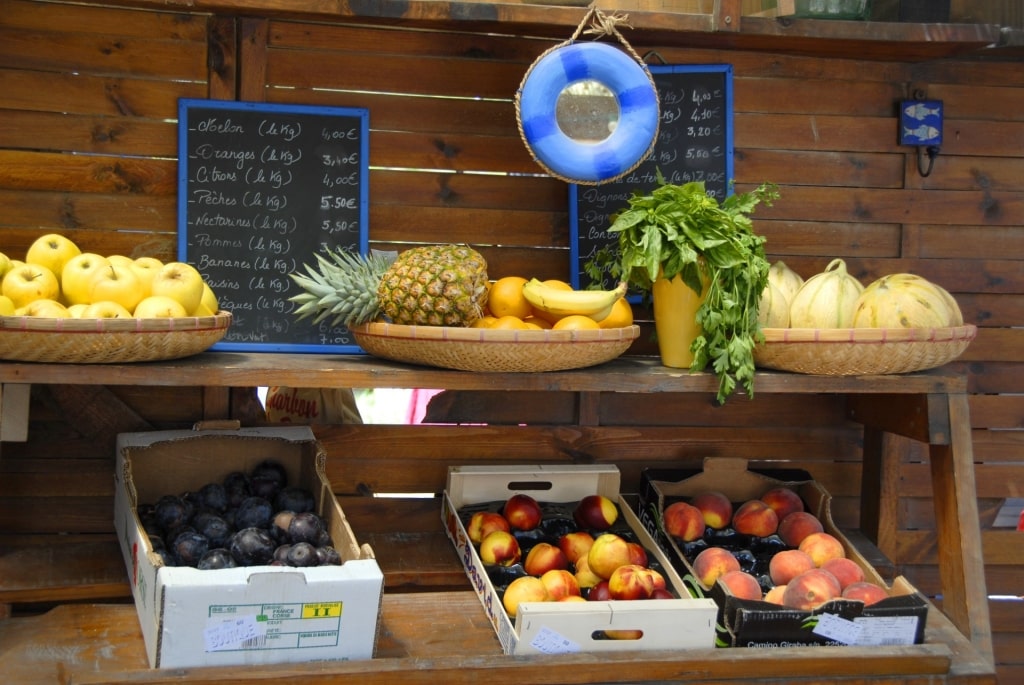
Market in Corsica
Corsica may be part of France, but the island prides itself on its individual cuisine. The best place to enjoy this is the produce market at the Place César-Campinchi, spilling into Place Foch next to the market square in the center of Ajaccio.
Come here to soak up the atmosphere and sample the island’s specialties: wild honey with flavors of the maquis, tangy cheeses, richly marbled charcuterie, and fresh fruit and vegetables, from garlicky olives to oversized peaches, and juicy cherries.
Fresh produce aside, you’ll find fig preserves, tapenade (a sharp-tasting spread of olives, anchovies, and capers), and chestnut-flavored jams and liquors.
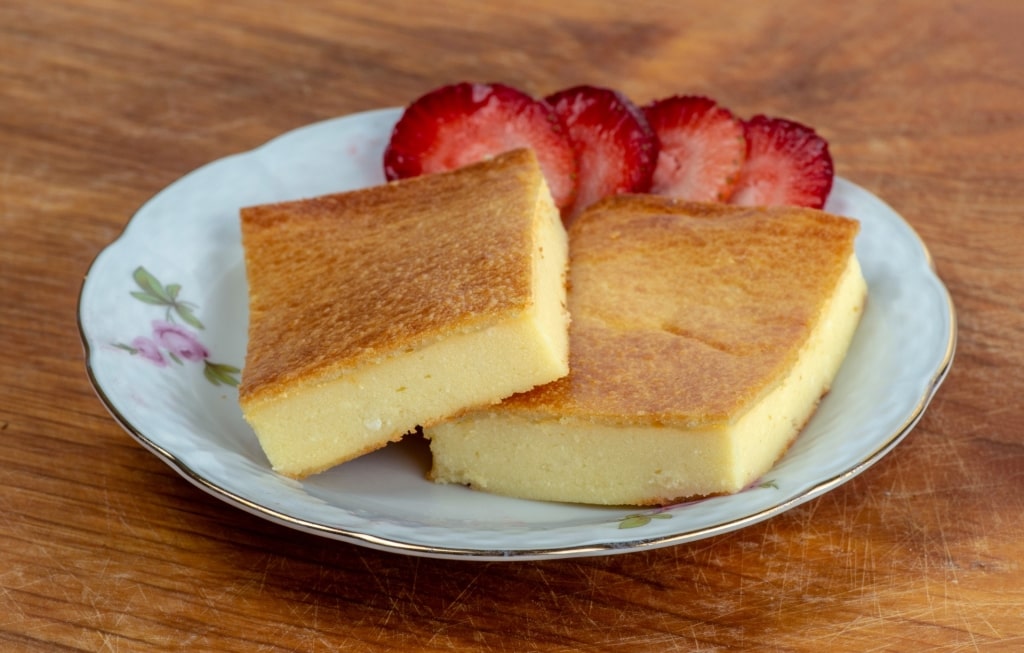
Fiadone
If you can, sample brocciu, a salty local cheese produced from the milk of ewes; in restaurants, you’ll find it in fiadone, a lemon cheesecake. Prisutto is a distinctive local ham, while civet de sanglier is a rich stew of wild boar, native to the island; if it’s not in the market, you’ll find it on offer in any self-respecting local brasserie.
A word of warning, though: if you see something called fromage de tête (literally, “head cheese”), bear in mind that it’s far from cheese; this delicacy is made from pigs’ brains.
Read: Best Places to Go Shopping in France
Take Home the Scent of the Maquis
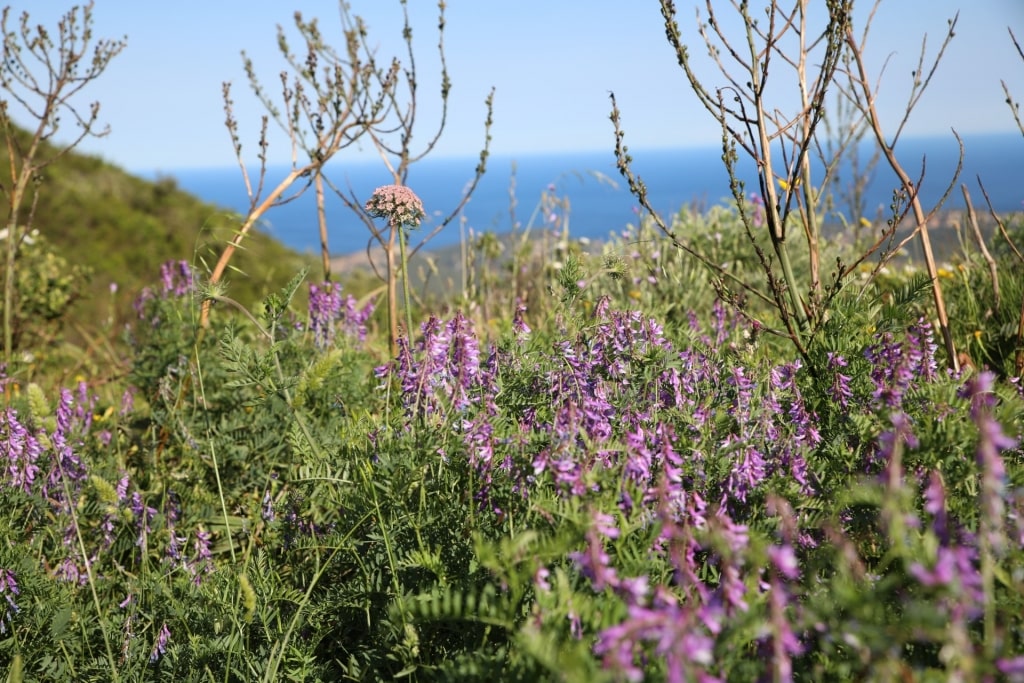
Maquis
Corsicans (Napoléon included) claim that their island has a unique scent, composed of the wild herbs and fragrant scrub that covers the hills and the coast.
This evergreen undergrowth is called the maquis, or macchia, and blends the scents of heather, Corsican mint, myrtle, and silvery curry plant.
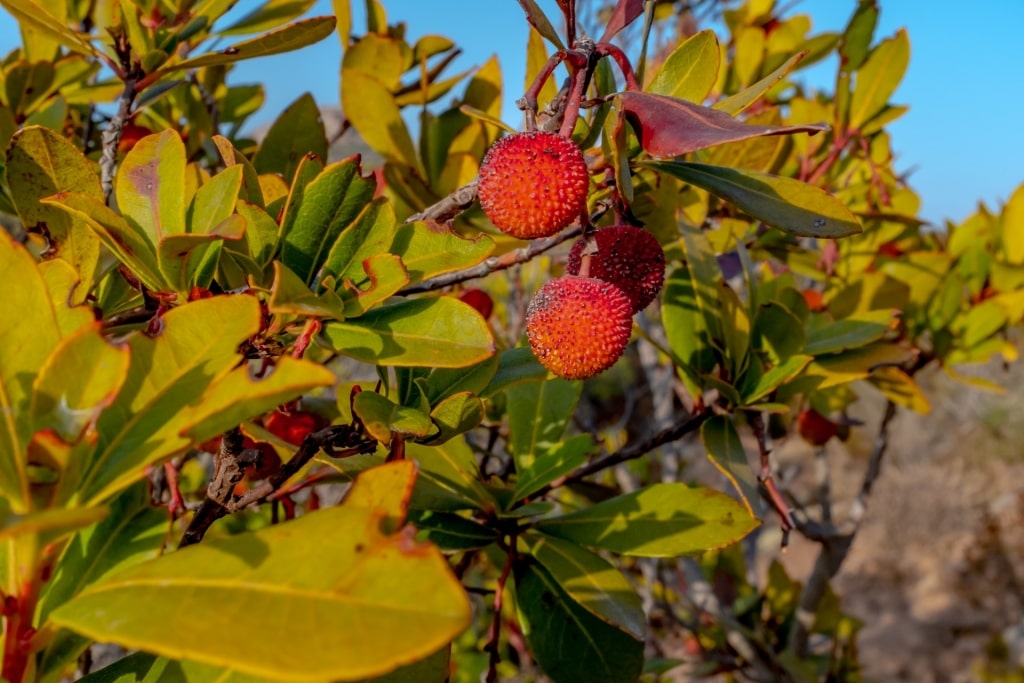
Strawberry tree
Thrown into the mix is the strawberry tree, not a strawberry at all but a bushy shrub that produces small fruits that are made into jellies and are believed to have strong anti-inflammatory properties.
Bees feed on the pollen of the maquis and produce a strong, slightly bitter honey that is believed to have phenomenal powers of healing.
Corsican sea captains claimed that they could smell their island on the breeze before its coastline came into view, so intoxicating was the scent of the maquis. Unsurprisingly, the scent has been bottled and you’ll find maquis candles, lotions, and room fragrances to buy. A word of advice; buy these in Corsica as they are hard to come by away from the island.
Gaze at the Calanques de Piana
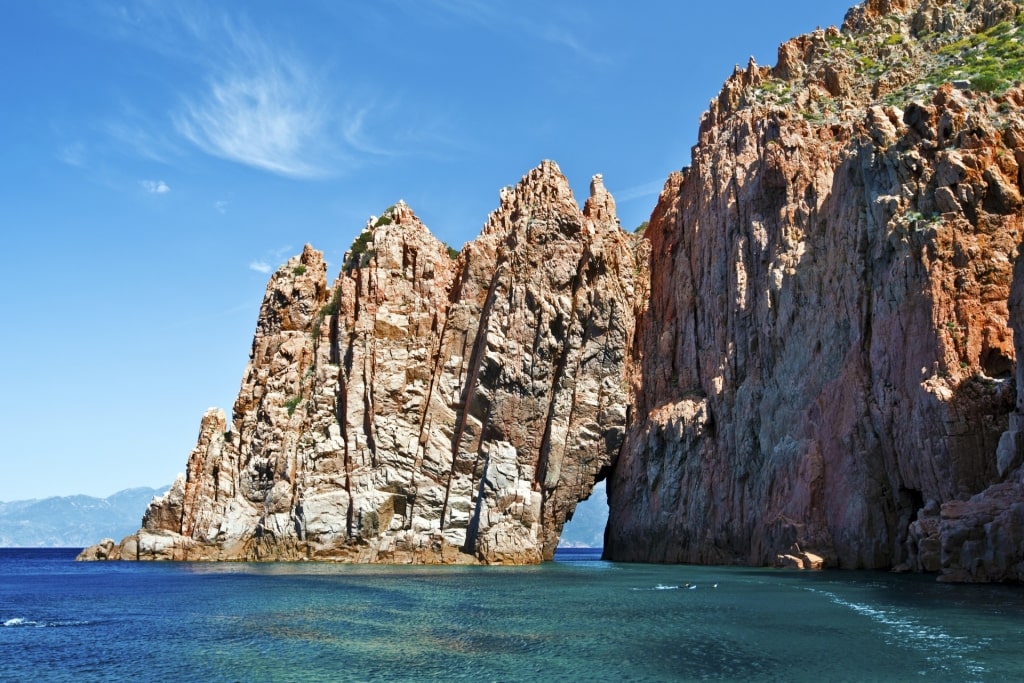
Calanques de Piana
Corsica’s coastline is spectacular, with sheer-sided mountains plunging into the sparkling Mediterranean, and rock formations so curiously sculpted by wind and waves that you’ll soon be making up names for them.
One of the best places to admire this natural drama is the Calanques de Piana, a UNESCO World Heritage Site north of Ajaccio. Here, sheer, rose-pink and ochre granitic cliffs plunge into aquamarine shallows, while curved rock arches, shadowy caves, and jutting pinnacles inspire images almost worthy of a movie setting.
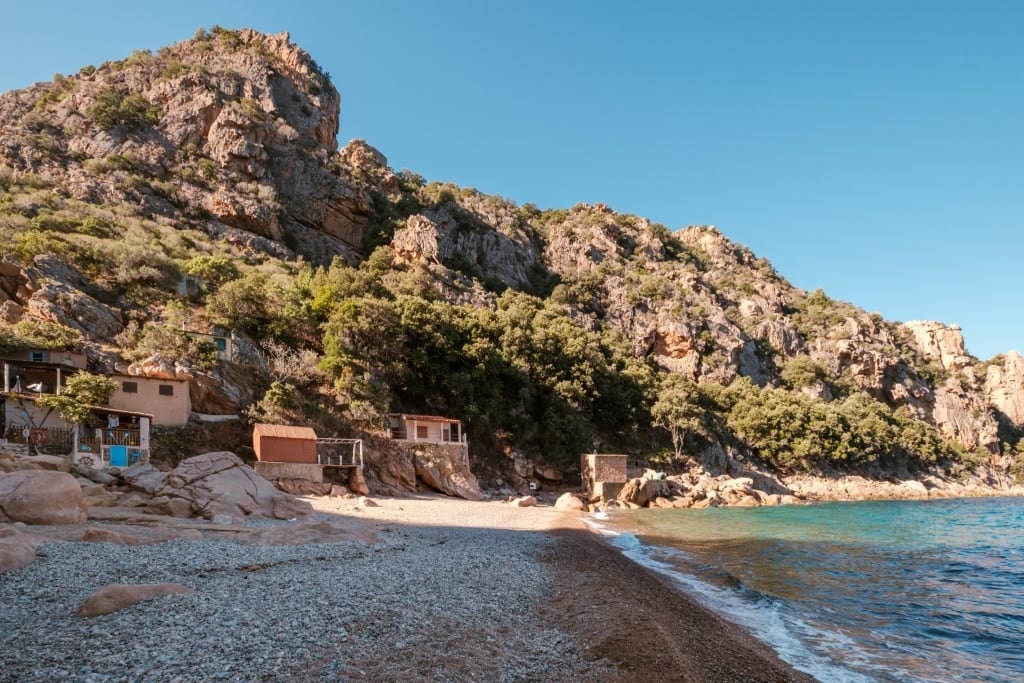
Ficajola Beach
The rock formations do, indeed, have names, from La Tortue (the turtle) to L’Aigle (the eagle). If you take a full day trip here from Ajaccio (which is worth the distance), bring swimming gear as you could take a break on pebbly Ficajola Beach against a backdrop of rose-pink cliffs.
Look out for dolphins out at sea, and eagles flying on the thermals overhead.
Admire Fine Art at the Fesch
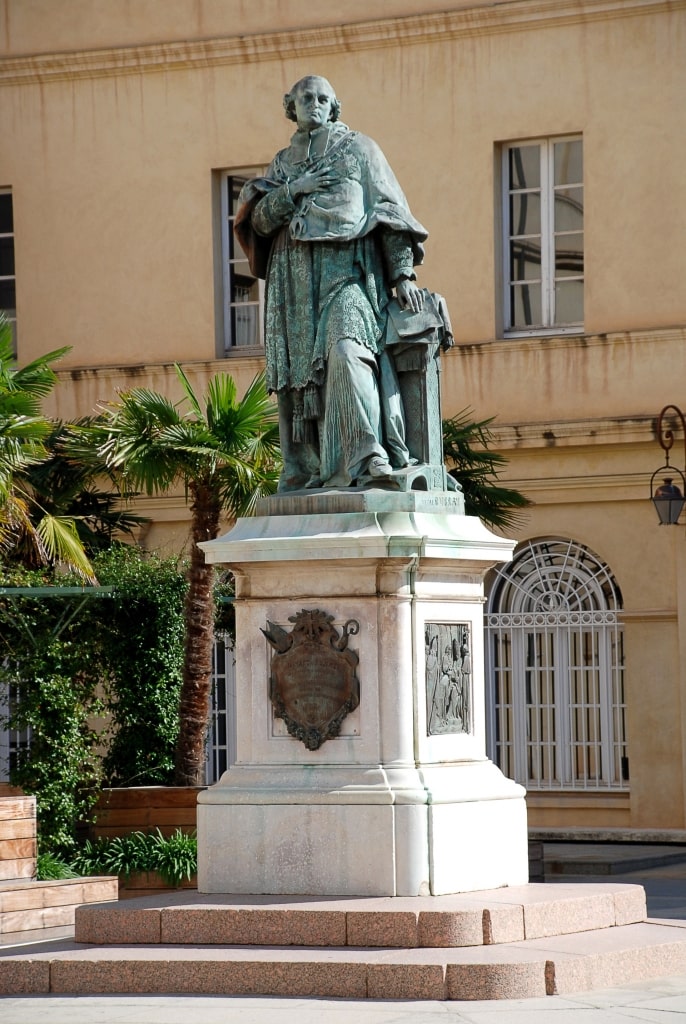
Palais Fesch
Corsica may be a small island, but the fine arts Palais Fesch gallery in Ajaccio displays an impressive collection of great Italian masterpieces, from the 14th to the 18th centuries.
The museum was, in fact, once the home of Cardinal Fesch, the uncle of Napoléon, and a dedicated patron of the arts. The Cardinal bequeathed more than 1,000 works of Italian art to Ajaccio upon his death in 1839, out of a collection of more than 17,000 pieces.
Even now, this museum is regarded as the most important collection of Italian art in the world, beyond the Louvre in Paris.
Stroll the various rooms and take time to admire paintings by legendary artists including Michelangelo, Titian, Botticelli, and Vasari. There’s Bonaparte family memorabilia to take in, too, from military medals to sculptures and paintings.
Discover the Underwater World
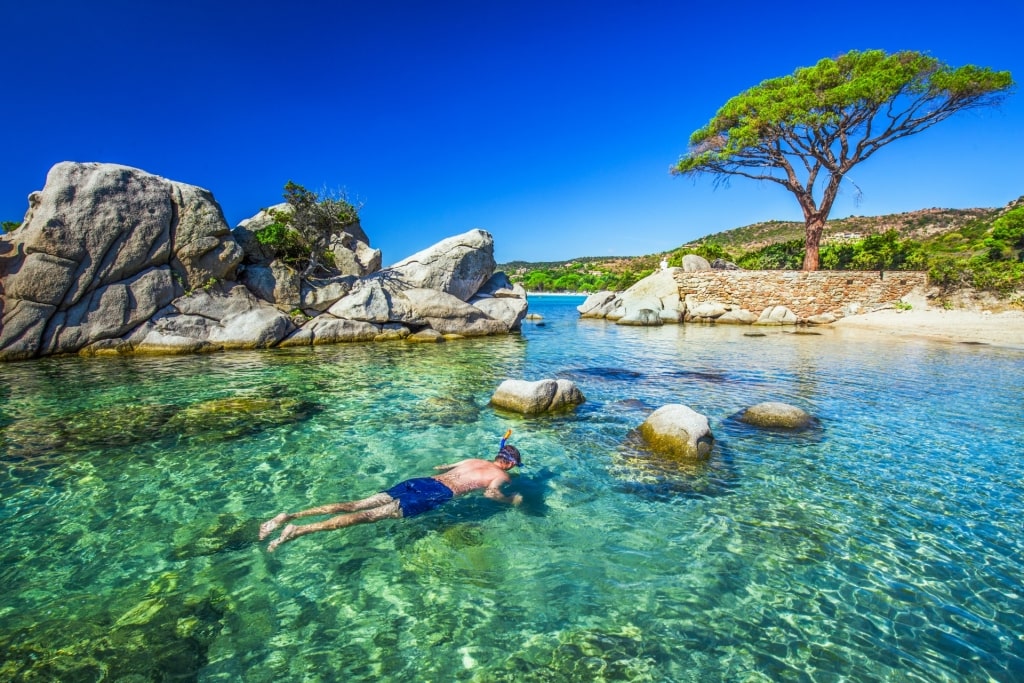
Snorkeling in Corsica
Corsica has some of the cleanest, clearest water in the Mediterranean and, as such, is an incredible island for snorkeling.
Take a boat ride across the sparkling Golfe d’Ajaccio to one of many pristine snorkeling spots, where you’ll have the opportunity to swim slowly over colorful sponges, corals, gently undulating forests of seagrass, and tumbled rocks.
Look out for grouper, eels, small rays, and darting octopus as you explore the sun-dappled shallows.
Hike the Chemin des Crêtes

Iles Sanguinaires
Corsica’s mountains are crisscrossed with wonderful hiking trails, although many of them require a degree of stamina and a time commitment. If you want to try a hike but have limited time, consider the Chemin des Crêtes, or the “crest trail”, that starts near the center of Ajaccio.
Join the path in the Bois des Anglais and follow it for three hours along the contours of the hills behind the city. The hike is moderate, with a few steep sections, and plenty of viewpoints.
You’ll be well clear of the urban area, the scent of the maquis and pine in the air, with magnificent views towards the slender peninsula of Pointe de la Parata and the four Iles Sanguinaires scattered off the end of the point.
This is a one-way hike, so you’ll need to get a taxi back to town. Stop for a swim after your walk; the trail emerges near the main road, the Route des Sanguinaires, with a beach just the other side.
Bask on Dreamy Silver Beach
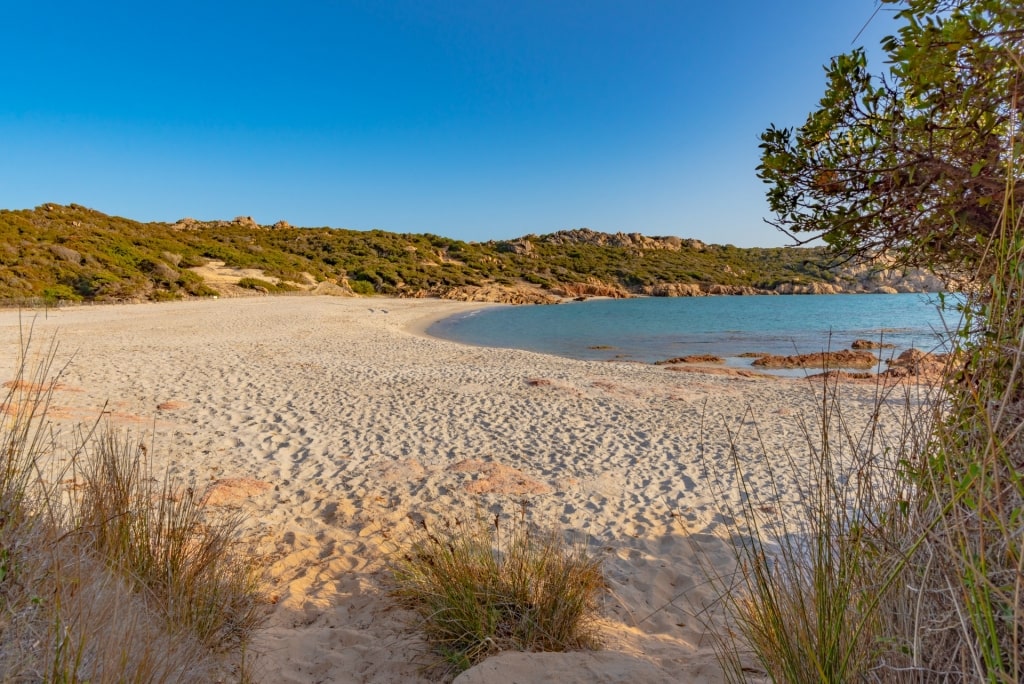
Plage d’Argent
About an hour to the south of Ajaccio is one of Corsica’s most beautiful beaches, Le Plage d’Argent, also known as Mar E Sole, the perfect spot for unwinding in a dreamy setting. You can get there from Ajaccio by speed boat if time is tight—the journey takes about 20 minutes.
The sand here is a silvery white and the shallows an almost iridescent shade of aquamarine, thanks to the sandy sea floor. Red rocks are scattered along the beach, and there are pine forests and fragrant scrub behind the shore.
The beach is popular with residents of Ajaccio so gets busy on weekends, when you’ll also find quite a few yachts anchored here. A couple of watersports concessions rent jet skis and paddle boards, while the seasonal restaurant, Le Plage d’Argent, is a toes-in-the-sand spot for pizzas and salads.
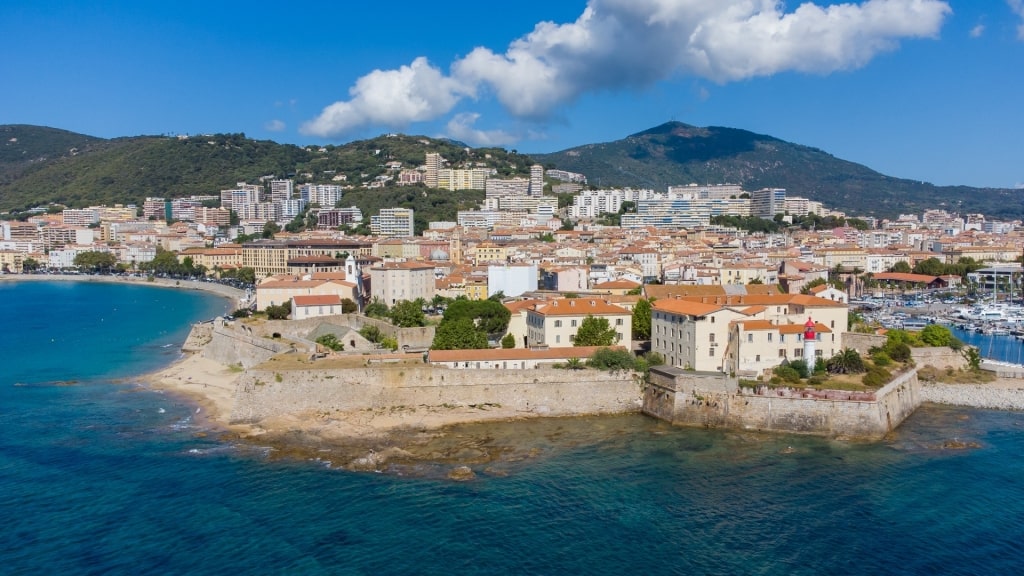
Ajaccio
Are you tempted to discover more of Corsica’s natural beauty? Browse Celebrity’s cruises to Ajaccio and plan your perfect vacation.
